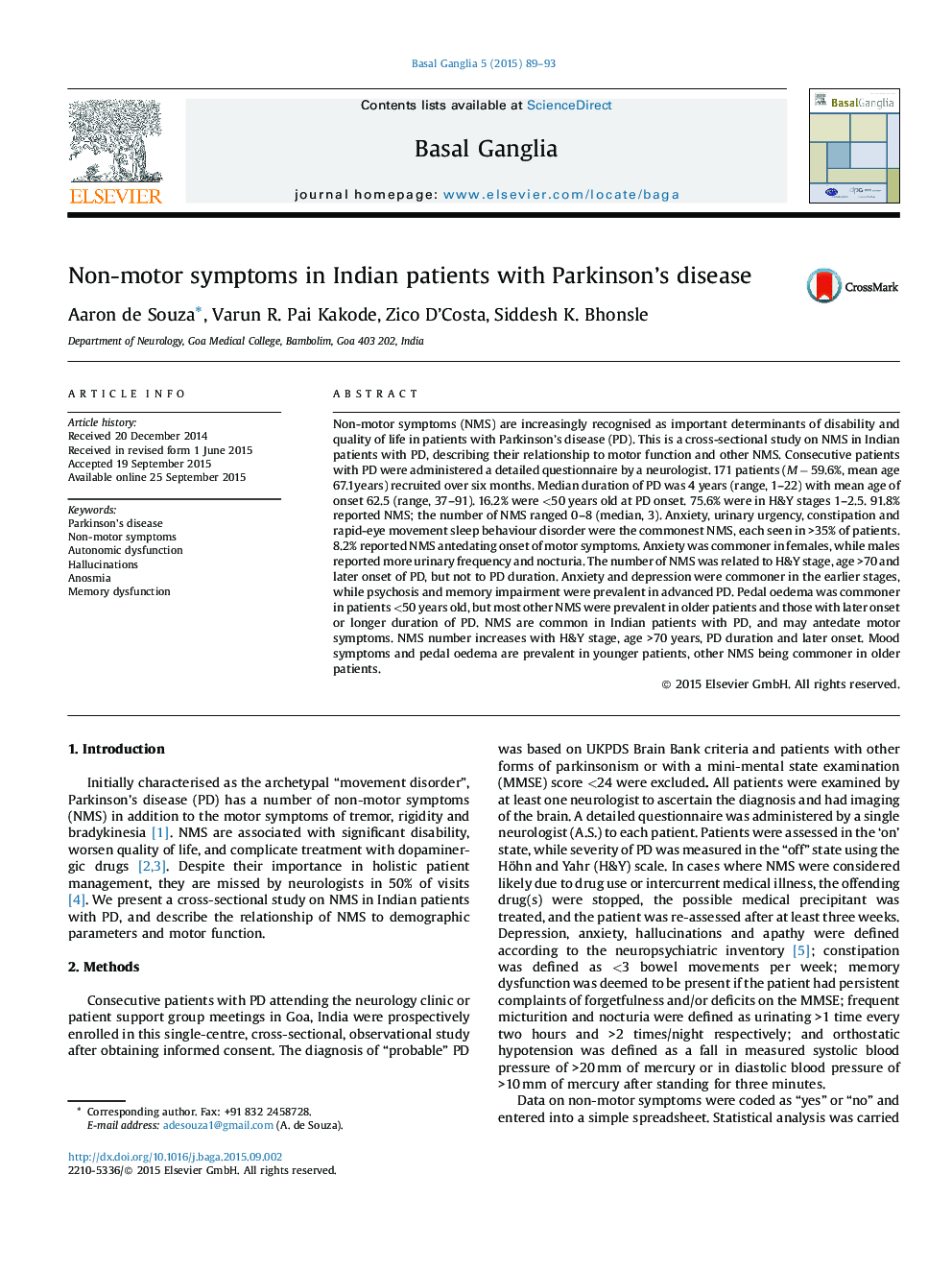| Article ID | Journal | Published Year | Pages | File Type |
|---|---|---|---|---|
| 3036034 | Basal Ganglia | 2015 | 5 Pages |
Non-motor symptoms (NMS) are increasingly recognised as important determinants of disability and quality of life in patients with Parkinson’s disease (PD). This is a cross-sectional study on NMS in Indian patients with PD, describing their relationship to motor function and other NMS. Consecutive patients with PD were administered a detailed questionnaire by a neurologist. 171 patients (M − 59.6%, mean age 67.1years) recruited over six months. Median duration of PD was 4 years (range, 1–22) with mean age of onset 62.5 (range, 37–91). 16.2% were <50 years old at PD onset. 75.6% were in H&Y stages 1–2.5. 91.8% reported NMS; the number of NMS ranged 0–8 (median, 3). Anxiety, urinary urgency, constipation and rapid-eye movement sleep behaviour disorder were the commonest NMS, each seen in >35% of patients. 8.2% reported NMS antedating onset of motor symptoms. Anxiety was commoner in females, while males reported more urinary frequency and nocturia. The number of NMS was related to H&Y stage, age >70 and later onset of PD, but not to PD duration. Anxiety and depression were commoner in the earlier stages, while psychosis and memory impairment were prevalent in advanced PD. Pedal oedema was commoner in patients <50 years old, but most other NMS were prevalent in older patients and those with later onset or longer duration of PD. NMS are common in Indian patients with PD, and may antedate motor symptoms. NMS number increases with H&Y stage, age >70 years, PD duration and later onset. Mood symptoms and pedal oedema are prevalent in younger patients, other NMS being commoner in older patients.
